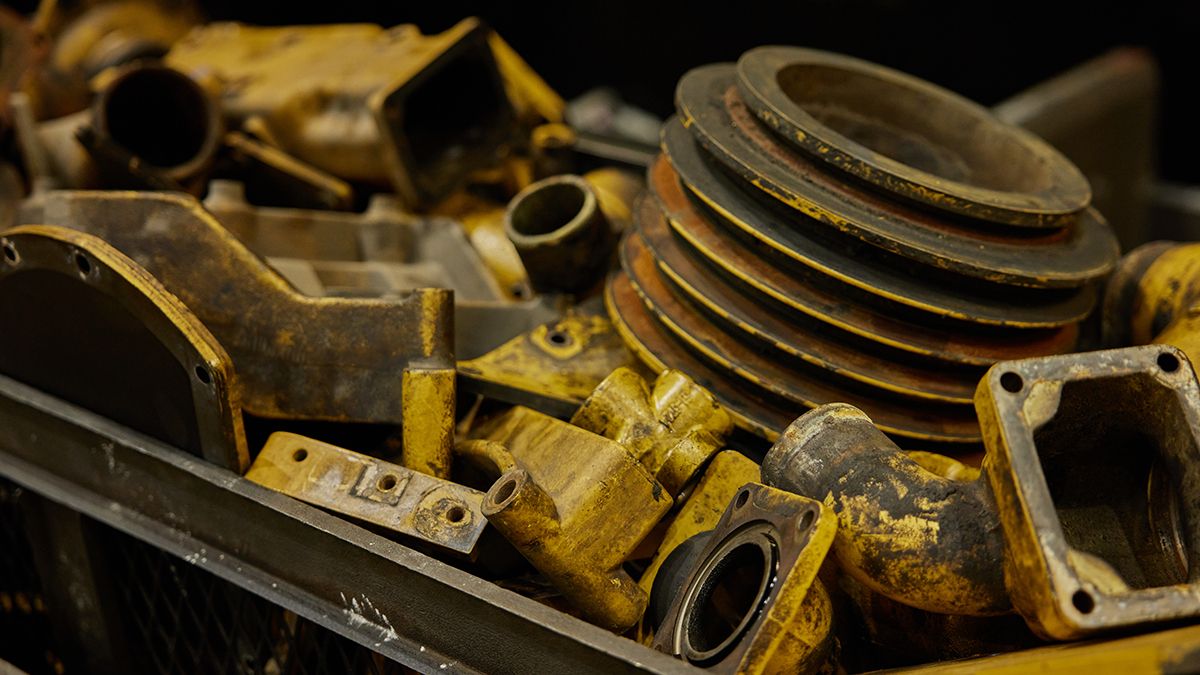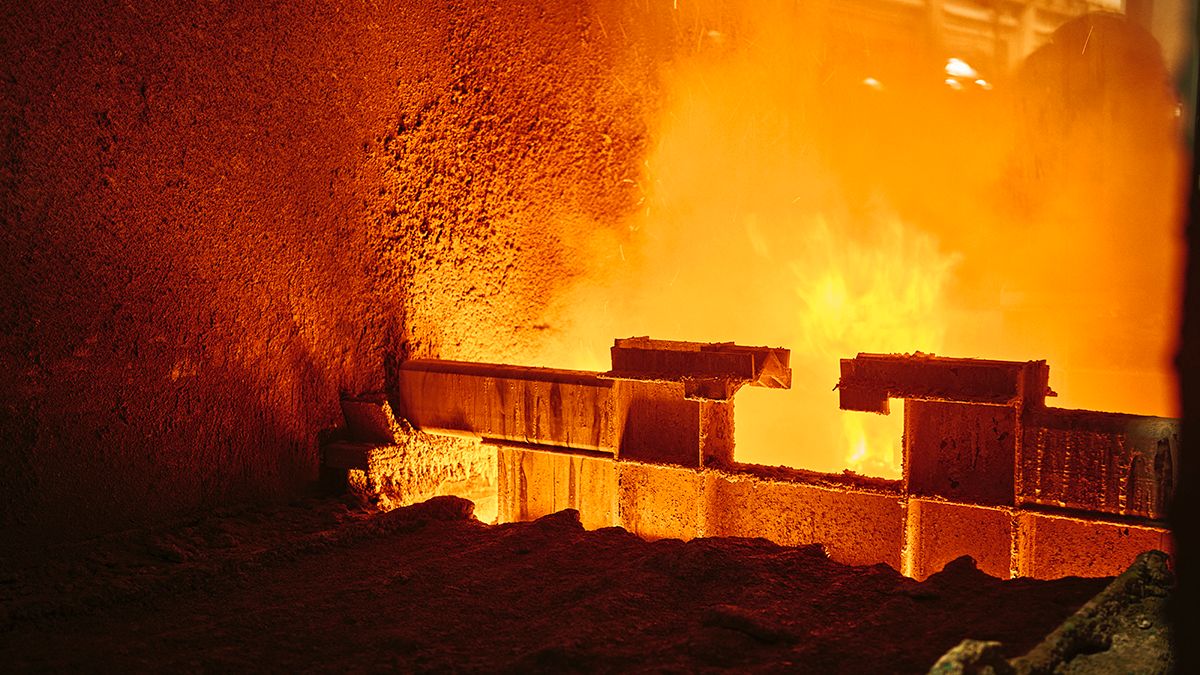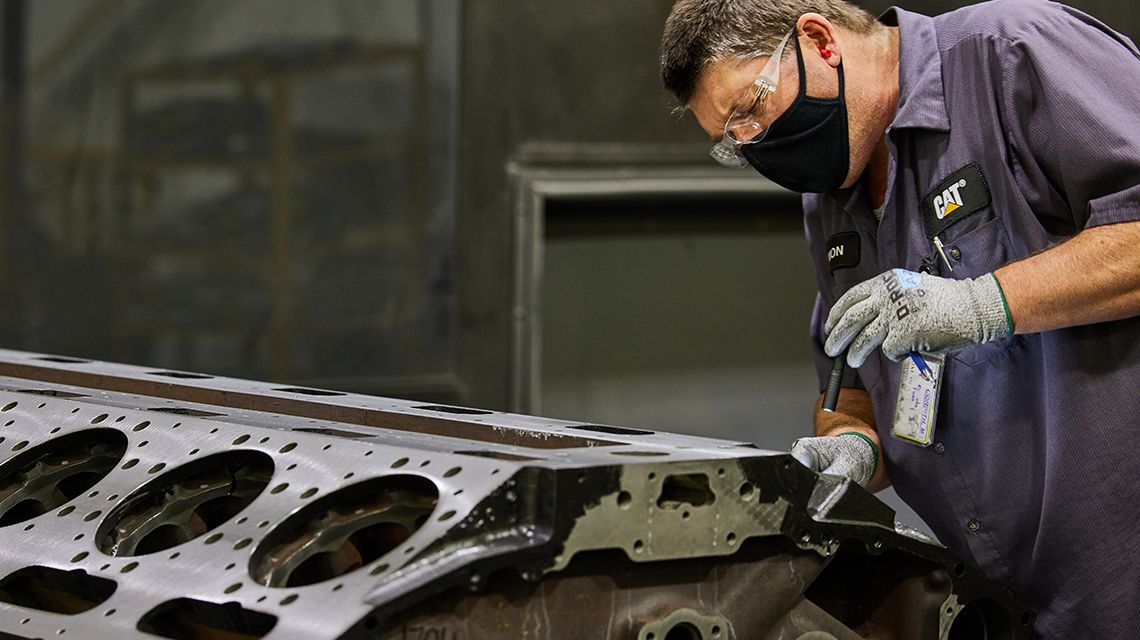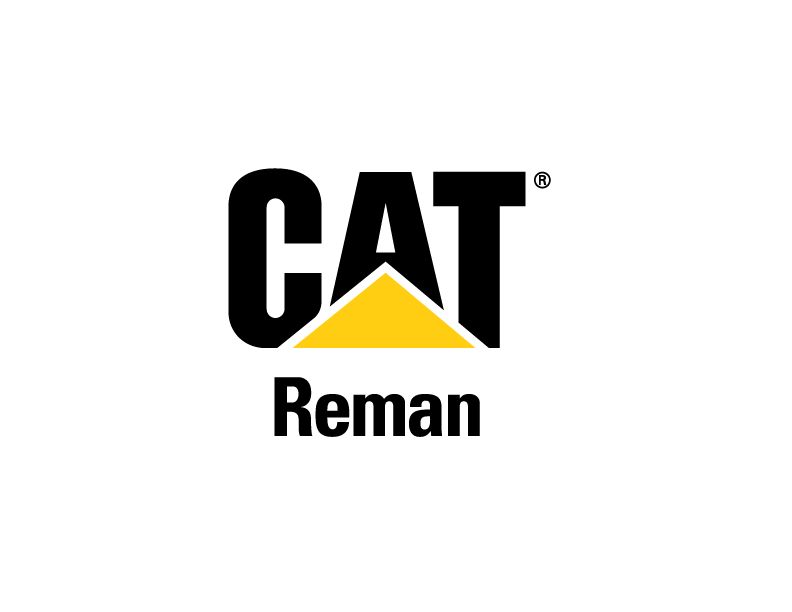

Sign In
Welcome! Sign In to personalize your Cat.com experience
If you already have an existing account with another Cat App, you can use the same account to sign in here
Register Now
One Account. All of Cat.
Your Caterpillar account is the single account you use to log in to select services and applications we offer. Shop for parts and machines online, manage your fleet, go mobile, and more.
Account Information
Site Settings
Security
How We Reclaim and Salvage Equipment Parts
Cat® equipment has long been known for its durability and reliability, and we aim for Cat Reman products to live up to that same high standard. Throughout the remanufacturing process, we take care to bring equipment parts back to the performance specifications you expect — and need. Here’s a glimpse into that process, focusing on cleaning and salvage.
Estimated read time: 4 minutes
Each step of our proprietary remanufacturing process contributes to the sustainability benefits we’re proud of. Here are just a few stats showing reductions compared with manufacturing new parts1.
65-87% less greenhouse gas process emissions
65-87% less process energy used
80-90% less raw materials used
Our advanced cleaning techniques as well as machining and metal deposition contribute to those sustainability benefits. Let’s go into more detail about how these processes work.
CLEANING
With 18 different cleaning processes to choose from, Cat Reman can clean many products, based in part on material composition.
“Reclaim is the cleaning of any part we get from disassembly. We salvage, we machine, we inspect, and then it'll go to assembly, and they'll assemble it,” explains Megan Pace, team lead of engine, cranks and blocks (ECB) reclaim. “When you disassemble it, it's old, it's grungy. You don't really know if you can use it or not. So, that's where our cleaning process comes in.”
Here are some examples of how the reclaim process cleans and inspects each part according to its specific needs:
Aqueous cleaning uses a combination of water and chemistry at various parameters to meet our cleanliness requirements. The parameters that are most critical include time, temp, pH and concentrations. Typical equipment includes immersion tanks, cabinet washers, ultrasonics and flush stations.

Mechanical cleaning uses a combination of mechanical force and, potentially, a cleaning media. The media could be blast media, water or a combination. Dimensional evaluations and cleanliness audits are required to validate this process by part. Typical equipment includes dry blast, slurry blast, high pressure blast and vibratory bowls.
Thermal cleaning is all about heat. In addition to thermal cleaning at 750 degrees Fahrenheit (399 degrees Celsius) or higher, secondary cleaning is needed to produce the desired result. Typical equipment includes salt bath, fluidized bed and ovens.
Cat Reman products may undergo one or more of these three categories of cleaning processes to confirm they are viable to be remanufactured to like new quality and to meet the required cleanliness specifications.

SALVAGE
After the parts have been cleaned and inspected, the viable parts are salvaged using a variety of salvage technologies to meet like new quality specifications. Salvage includes machining techniques that range from precision grinding to boring and milling. Additive manufacturing can include metal deposition, which involves applying a new layer of material onto the surface of parts to bring them back to Caterpillar performance specifications.
Our engineers have designed and tested Cat Reman salvage techniques, taking into account the smallest details. For example, material hardness, application needs and dimensional tolerances must all meet the original specs. The result is like new products that cut down on resource consumption.
Jeff Stark, salvage development technician at the Cat Reman facility in Corinth, Mississippi, describes the metal deposition process. “We’re adding metal back to existing parts for different types of machine processes, and that contributes to taking parts from used to like new quality and performance,” he explains.
Consider this case study: Each year, Cat Reman uses approximately 50,000 pounds of powder and wire in our metal deposition processes. These processes contribute to remanufacturing 3.5 million pounds of parts per year.
In an age of disposability, when possible, Cat parts are built to last and designed to be remanufactured from the very beginning. Salvage processes are unique because they keep up with the processes of new design.
On Corinth’s salvage development team, “we use powdered metal that can be atomized with either gas or air.” The team feeds the metal through an assembly that goes on the laser head for the laser cladding process. “One benefit of laser cladding is it’s so focused. Your heat input is not that of traditional welding where you might distort the part due to excess heat. So, there’s a big benefit to it,” Stark explains.
Cleaning and salvage are just two of the Cat Reman processes each remanufactured part undergoes to meet like new performance and quality when assembled and sold to customers.
Check out the range and variety of available Cat Reman parts.
1Represents U.S. environmental impacts comparing "gate-to-gate" remanufacturing and manufacturing processes for engines and components. Based on 2018 external study of Cat engines, alternators and turbochargers. Does not include impacts elsewhere in our value chain.





